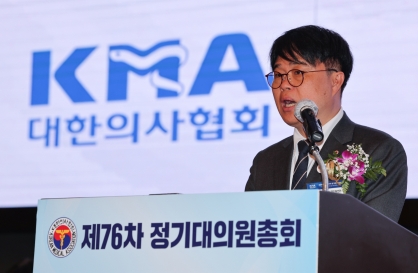[THE INVESTOR] In the years since its foundation, Naver has become far more than a search engine. It has grown into a giant that dominates Korea’s online services. Naver portal’s news service -- which displays news articles from most online and traditional media outlets in one place -- has become the main source of news for many.
As Naver’s clout grew, so did its influence over local news outlets.
As Naver’s clout grew, so did its influence over local news outlets.

Since March, Naver and Daum introduced the Committee for Evaluation of News Partnership that evaluates whether a news article is acceptable for their news services.
In rolling out the measures, the companies said that the committee will work to weed out clickbait of unnecessarily graphic or sexual nature. The committee also picks out stories that it deems to be advertorials.
The committee’s purpose, on the surface, appears noble and for the better good. However, for every five articles that fail its evaluation, the portals issue one point. If a company racks up 10 points in a month, or 30 points over the course of one year, that company faces being barred from sending stories to the portals’ news services for as long as one year.
In Korea, such a sentence would be devastating in terms of online traffic. Not only do portals account for most of news-related traffic, but news outlets are heavily dependent on portals.
While the country’s two largest portals -- Naver and Daum -- both have the committee in place, the format of Naver’s news service has made it the bigger concern.
Naver’s news service has two main platforms. The “Newsstand” that takes the form similar to that of a blog that shows a limited number of stories from each publication. The other is the general news service where all news articles are divided into categories much like the homepage of any other news organization.
With the Newsstand limiting the number of articles that can be exposed, many news outlets have taken to using provocative headlines and images to draw attention. When such clickbaits are noticed by Naver’s “public monitoring group,” they are put up for review by the committee, and invariably lead to a point.
In addition, it has emerged that Naver’s monitoring is not applied equally to all publications.
A Naver official in charge of related issues said “publications with larger traffic is more closely monitored,” despite having said that the company’s monitoring group “applies the same guidelines to all 150 (publications) in Newsstand.”
While the company has posted a detailed guidelines for items that will incite monitoring group’s attention, the official also said that “the overall Newsstand is what the monitoring group looks at” rather than all articles that violate the guidelines.
The committee has issued points to numerous traditional media outlets, and a handful of smaller organizations have already had their articles barred for a 24-hour period.
“It seems to me that they want to take out potential competition, as individual news organizations offering links and such would (be competition) for what Naver offers,” an executive of a local newspaper said.
The committee’s power over the traditional media does not end with the portals’ news services. The committee plans to assess out-links embedded in stories exposed through portals’ news services, and apply the same rules to these stories, which are posted on individual news companies’ own websites.
“It feels like Naver has become a controlling body, a body that can decide whether a stories is news or not,” an editor with a local paper said.
“They have too much control. I don’t understand how things got so far that we (newspapers) are controlled by a portal.”
By Choi He-suk (cheesuk@heraldcorp.com)
-
Articles by Korea Herald






![[Weekender] How DDP emerged as an icon of Seoul](http://res.heraldm.com/phpwas/restmb_idxmake.php?idx=644&simg=/content/image/2024/04/25/20240425050915_0.jpg&u=)



![[Music in drama] An ode to childhood trauma](http://res.heraldm.com/phpwas/restmb_idxmake.php?idx=644&simg=/content/image/2024/04/25/20240425050929_0.jpg&u=)








![[Herald Interview] Mistakes turn into blessings in street performance, director says](http://res.heraldm.com/phpwas/restmb_idxmake.php?idx=652&simg=/content/image/2024/04/28/20240428050150_0.jpg&u=20240428174656)
